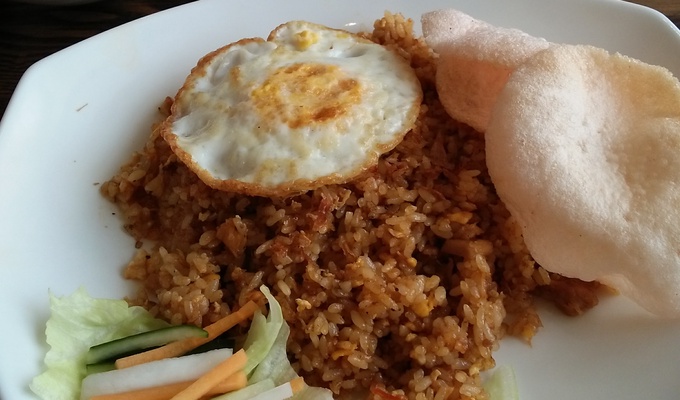Nasi goreng is a Southeast Asian fried rice dish, usually cooked with pieces of meat and vegetables. One of Indonesia's national dishes, it is also eaten in Malay-speaking communities in countries such as Malaysia, Singapore and Brunei, and has gained popularity in Sri Lanka through migrations from the Malay Archipelago, in countries like Suriname via Indonesian immigrant communities, and in the Netherlands through its colonial ties with Indonesia. Nasi goreng is distinguished from other Asian fried rice preparations by its distinct smoky aroma, and caramelised yet savoury undertones of flavour. There is no single defined recipe for nasi goreng, and its composition and preparation varies greatly from household to household.
Nasi goreng has long been considered an important staple of Indonesian cuisine. In 2018, it is officially recognized by the Indonesian government as one of the country's five national dishes. An ubiquitous meal throughout Indonesia, particularly for breakfast, it can be enjoyed in simple versions from a tin plate at a roadside food stall, eaten on porcelain in restaurants, or collected from the buffet tables at dinner parties in urban cities like Jakarta. Premixed packaged seasonings for nasi goreng are widely available for purchase, and microwave-heated frozen versions of nasi goreng may be found in convenience store outlets throughout Indonesia.
